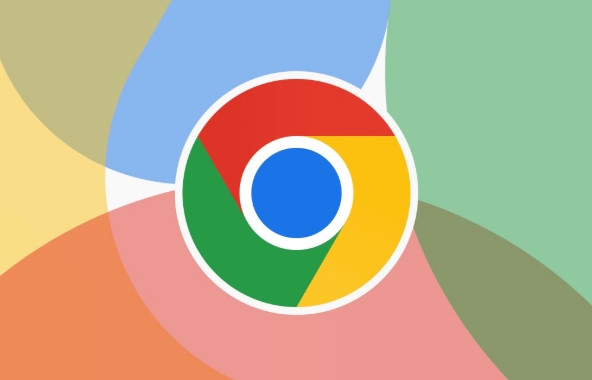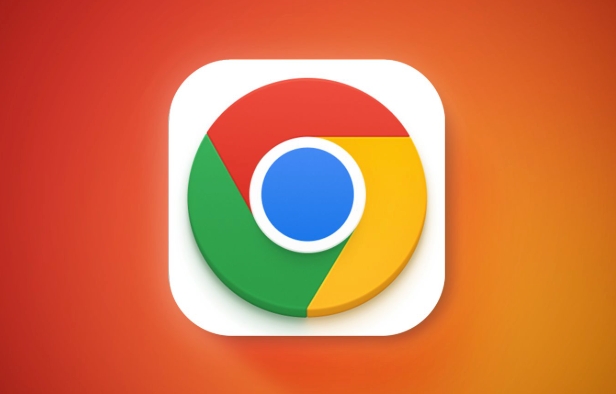 Computer Tutorials
Computer Tutorials
 Troubleshooting
Troubleshooting
 Google Chrome is not connecting to the internet but other browsers are
Google Chrome is not connecting to the internet but other browsers are
Google Chrome is not connecting to the internet but other browsers are
Aug 03, 2025 am 06:19 AMFirst, check Chrome’s proxy settings and disable any manual proxy or setup script if not needed; second, disable extensions one by one or test in Incognito Mode to identify problematic add-ons; third, clear Chrome’s network settings by flushing socket pools and clearing DNS cache via chrome://net-internals; fourth, temporarily turn off IPv6 on your network adapter to rule out IP-related issues; fifth, check antivirus or firewall settings and disable HTTPS scanning or add Chrome to exceptions; sixth, reset Chrome settings to default via chrome://settings/reset to restore browser configuration; seventh, as a last resort, uninstall Chrome, delete leftover folders, and reinstall it fresh; finally, reset Chrome flags to default if experimental features are causing connectivity problems—most issues are resolved within the first few steps, with proxy and extensions being the most common causes, and the problem is typically isolated to Chrome’s environment rather than the internet connection itself.

If Google Chrome isn’t connecting to the internet while other browsers like Firefox, Edge, or Safari are working fine, the issue is likely specific to Chrome and not your overall internet connection. Here’s how to troubleshoot and fix it:

1. Check Chrome’s Proxy Settings
Chrome uses system-wide proxy settings, but sometimes they can get misconfigured.
Steps:

- Press
Windows Ito open Settings. - Go to Network & Internet > Proxy.
- Under "Manual proxy setup," make sure "Use a proxy server" is turned OFF (unless you're required to use one).
- Also click "Use setup script" and ensure it's turned off unless needed.
- Restart Chrome and test.
? Sometimes malware or network policies enable proxy settings without your knowledge.
2. Disable Chrome Extensions
A faulty or misbehaving extension can block network access.

What to do:
- Open Chrome and type in the address bar:
chrome://extensions/ - Toggle off each extension one by one and test the connection.
- Or, start Chrome in Incognito Mode (
Ctrl Shift N) — extensions are disabled by default here. - If it works in Incognito, an extension is likely the culprit.
Try disabling ad blockers, VPN extensions, or security tools temporarily.
3. Clear Chrome’s Network Settings (Reset Sockets, Cache, etc.)
Chrome maintains its own network stack, including DNS cache and socket pools.
Fix:
- Close Chrome completely.
- Reopen it and go to:
chrome://net-internals/#sockets
- Click "Flush socket pools"
- Then go to:
chrome://net-internals/#dns
- Click "Clear host cache"
This forces Chrome to refresh its network state.
4. Turn Off IPv6 (If Needed)
In some network environments, IPv6 misconfiguration can cause Chrome to hang.
Workaround:
- Temporarily disable IPv6 on your network adapter:
- Open Control Panel > Network and Sharing Center > Change adapter settings
- Right-click your active connection > Properties
- Uncheck "Internet Protocol Version 6 (TCP/IPv6)"
- Click OK and restart Chrome.
Test the connection. If it works, re-enable IPv6 later if needed — but this helps isolate the issue.
5. Check Antivirus or Firewall Settings
Some security software blocks Chrome specifically, especially if it suspects tampering or certificate injection (e.g., for HTTPS scanning).
Things to try:
- Temporarily disable your antivirus/firewall.
- See if Chrome connects.
- If yes, check the AV settings for HTTPS scanning or browser protection features.
- Consider adding Chrome to the exception list.
Common culprits: Kaspersky, Avast, AVG, Norton.
6. Reset Chrome Settings
If none of the above work, reset Chrome to default.
Steps:
- Go to:
chrome://settings/reset
- Click "Restore settings to their original defaults"
- Confirm the reset.
This won’t delete bookmarks or saved passwords, but it will disable extensions and clear temporary data.
7. Reinstall Chrome (Last Resort)
If Chrome still won’t connect:
- Uninstall Chrome via Control Panel > Programs > Uninstall a program
- Delete leftover folders:
C:\Users\[YourName]\AppData\Local\Google\ChromeC:\Users\[YourName]\AppData\Local\Google\Update
- Reinstall Chrome from http://ipnx.cn/link/28557060cef0f58b8d918a2f8eac053f
Bonus: Try Chrome Flags (Advanced)
Misconfigured experimental features can break connectivity.
- Go to:
chrome://flags
- Click "Restore all to default"
Basically, the issue is almost never the internet itself — it's Chrome’s environment. Start with proxy and extensions, then move to network resets. Most cases are resolved in the first few steps.
The above is the detailed content of Google Chrome is not connecting to the internet but other browsers are. For more information, please follow other related articles on the PHP Chinese website!

Hot AI Tools

Undress AI Tool
Undress images for free

Undresser.AI Undress
AI-powered app for creating realistic nude photos

AI Clothes Remover
Online AI tool for removing clothes from photos.

Clothoff.io
AI clothes remover

Video Face Swap
Swap faces in any video effortlessly with our completely free AI face swap tool!

Hot Article

Hot Tools

Notepad++7.3.1
Easy-to-use and free code editor

SublimeText3 Chinese version
Chinese version, very easy to use

Zend Studio 13.0.1
Powerful PHP integrated development environment

Dreamweaver CS6
Visual web development tools

SublimeText3 Mac version
God-level code editing software (SublimeText3)
 How to stop Chrome from updating in the background on Mac
Jul 21, 2025 am 12:41 AM
How to stop Chrome from updating in the background on Mac
Jul 21, 2025 am 12:41 AM
To prevent Chrome from automatically updating on Mac, it can be done by disabling update services, modifying permissions, and restricting network access. 1. Use terminal commands to disable the GoogleSoftwareUpdate daemon to prevent background updates; 2. Modify update directory permissions to prevent Chrome from starting the update process by itself; 3. Restrict Chrome's outbound network connection through system firewall or third-party tools to further eliminate update requests. Using these methods in combination can effectively prevent Chrome from being automatically updated.
 How to check active network connections
Jul 22, 2025 am 12:35 AM
How to check active network connections
Jul 22, 2025 am 12:35 AM
If you want to know the network connection on your current computer, you can view it through the command line tool; use netstat-ano on Windows to view all connections and PIDs, use ss-tulnp and lsof-i-P to obtain detailed information, and can also be monitored in real time through graphical interface tools such as resource monitor, nethogs, etc.
 How to stop Chrome from automatically opening PDF files
Jul 21, 2025 am 12:09 AM
How to stop Chrome from automatically opening PDF files
Jul 21, 2025 am 12:09 AM
To let Chrome download directly instead of opening it when clicking on the PDF link, 1. Enter chrome://settings/content/pdfDocuments to check "DownloadPDFfilesinsteadofautomatically opening theminChrome"; 2. Check whether there are plug-ins such as Lightpdf or Smallpdf interfering behavior, you can try to disable the test; 3. You can use the developer tools to copy the link and paste the new tag to trigger the download. The above methods can be selected according to the situation.
 How to fix screen tearing when scrolling in Chrome
Jul 25, 2025 am 12:55 AM
How to fix screen tearing when scrolling in Chrome
Jul 25, 2025 am 12:55 AM
The screen tear occurs when the Chrome browser scrolls, which is usually caused by the out-of-synchronization of rendering and refresh. The solutions are as follows: 1. Ensure that hardware acceleration is enabled, you can manually check the settings and restart the browser; 2. Forcefully enable Compositor and related options to optimize rendering; 3. Check the display refresh rate, use single-screen testing, and enable VSync or adaptive synchronization technology on supported devices; 4. Update the graphics card driver or replace the display interface such as using the DP interface. It is recommended to start the troubleshooting with simple steps and gradually adjust to find the best configuration.
 How to fix Chrome profile sync getting stuck in setup
Jul 25, 2025 am 01:10 AM
How to fix Chrome profile sync getting stuck in setup
Jul 25, 2025 am 01:10 AM
The problem of Chrome sync stuck can be solved through the following steps: 1. Check the network connection and Google account status to ensure normal access; 2. Log out and log in to the Chrome account again; 3. Clear the synchronized data and restart the browser; 4. Reset Chrome settings; 5. Try the traceless mode or new user profile. Sequentially checking can effectively restore the synchronization function.
 Chrome keeps opening new tabs by itself
Jul 22, 2025 am 12:22 AM
Chrome keeps opening new tabs by itself
Jul 22, 2025 am 12:22 AM
The problem of Chrome automatically popping up new tabs is usually caused by malicious extensions, advertising scripts, or browser hijacking. The solutions are as follows: 1. Check and uninstall suspicious extensions, especially ad-class plug-ins; 2. Clear browser caches and cookies to eliminate data corruption; 3. Check whether the homepage and default search engine settings have been tampered with and manually corrected; 4. Use antivirus software such as WindowsDefender or Malwarebytes to scan and clear potential malware; 5. Finally, try resetting Chrome settings to restore the default configuration. Troubleshooting in this order can effectively solve most abnormal labeling problems.
 How to fix Chrome opening new windows instead of tabs
Jul 26, 2025 am 01:29 AM
How to fix Chrome opening new windows instead of tabs
Jul 26, 2025 am 01:29 AM
1. Check whether the shortcut attribute has additional parameters and delete it; 2. Clear cache and switch startup settings, or create new user information; 3. Extend the impact and disable the problem plug-in through traceless mode. Chrome pops up new windows instead of tabs usually due to exceptions in shortcut parameters, cache configuration conflicts, or third-party extension interference. Check and adjust the corresponding settings in turn to resolve.
 How to fix Chrome when it's not printing correctly
Jul 26, 2025 am 02:46 AM
How to fix Chrome when it's not printing correctly
Jul 26, 2025 am 02:46 AM
Chrome printing exceptions can be solved in the following ways: 1. Check the printer selection, paper size, orientation, zooming and background graphics settings in the print preview; 2. Try stealth mode to eliminate extended interference and clear cache; 3. Update or reinstall the printer driver, replace the general driver or use the "Print as PDF" method; 4. Finally, you can reset the Chrome settings to restore the default. Most problems can be solved through the first few steps. If they still fail, you can export PDF to print.





